
The afternoon was spent at The Porcelain Exhibition Hall.

Discussion at the Porcelain Exhibition Hall
We looked at and photographed the shards on the 3rd floor. This time we did not visited the museum exhibition on the first floor or the exhibition hall on the second floor.
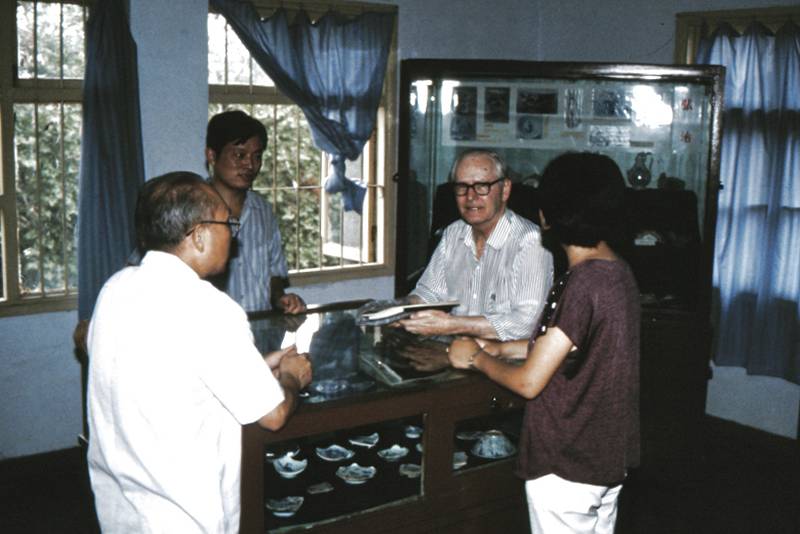
This time Bo was able to join in. This is actually the occasion when I took the pictures that are added in on the previous page.
Show case 4. Hongzhi (1488-1505) in the background.
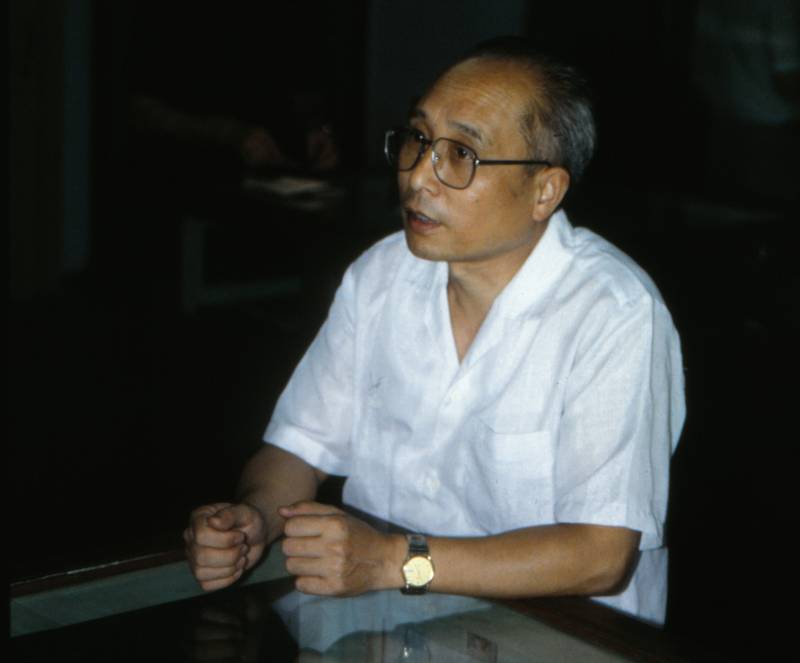
Porcelain Hall manager
We were offered a lot of tea I think out of concern for Bo. Bo spoke some and the Chinese expressed their willingness to exhibit minyao in Sweden.
As a related thought I think it is time to exhibit contemporary Chinese studio ceramics in Sweden.
Their manufacturing department was very small; it was limited to a corner of the back yard. Painting and decorating takes a lot longer than the turning of the body.
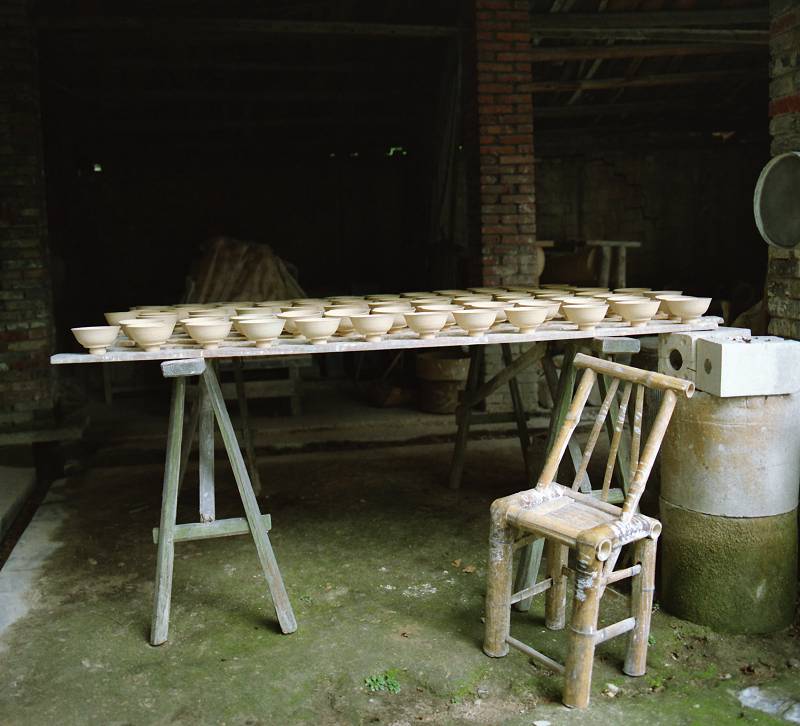
Bowls drying in the shade.
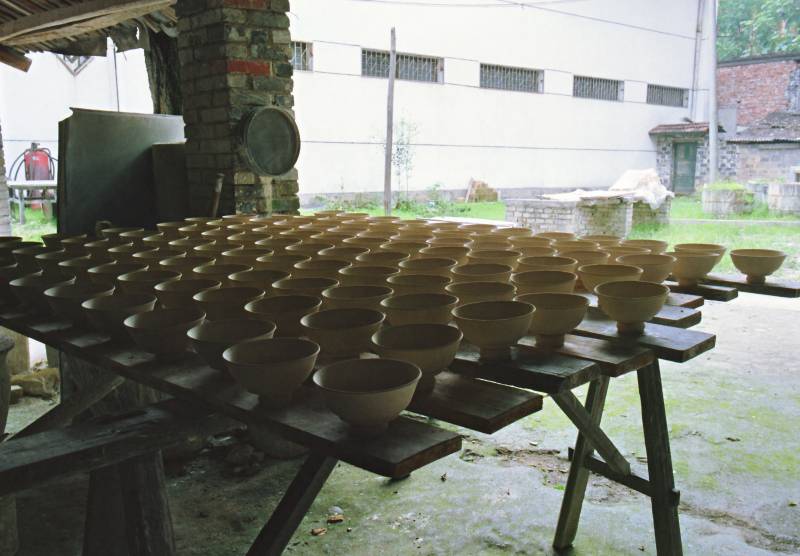
Same bowls, from the inside of the pavilion.
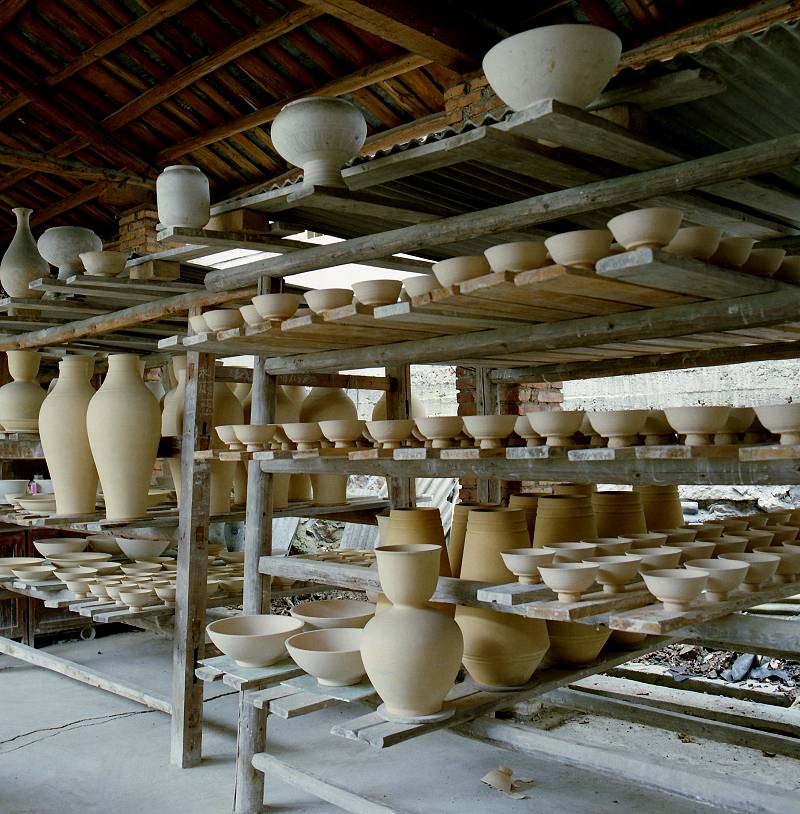
A variety of porcelain pieces drying in the shade. On the small bowls we can see that the bases and footrims are made in a different manner here, than at the 'Ancient Porcelain Factory'. The stub handle is here well inside the foot rim.
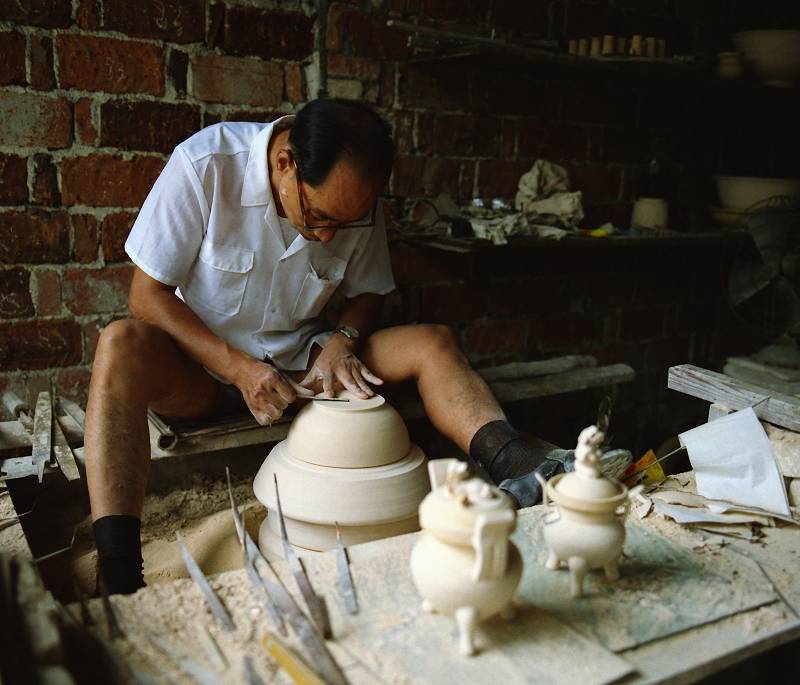
Shaving off excess clay from the base and carefully shaping the foot rim.
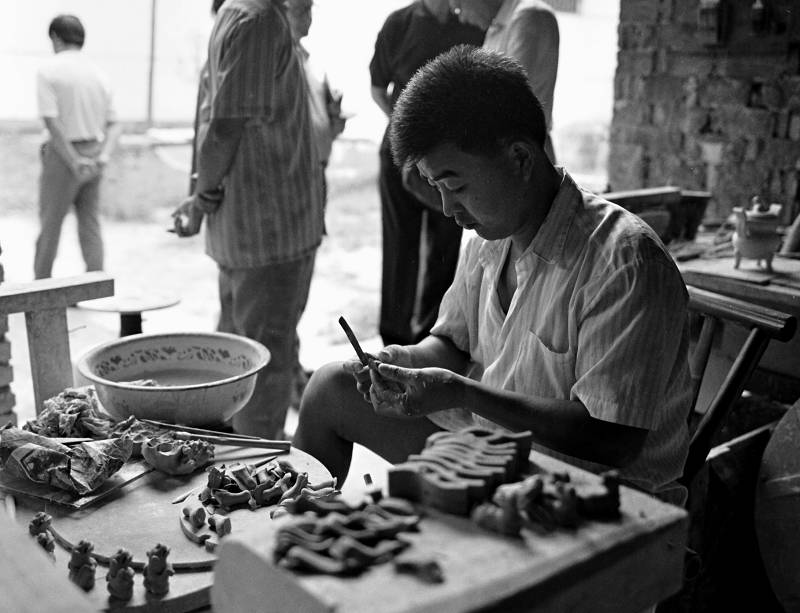
The censers are carefully having their ears and lid decoration added, that are cast somewhere else and have now dried enough to be added onto the main body.
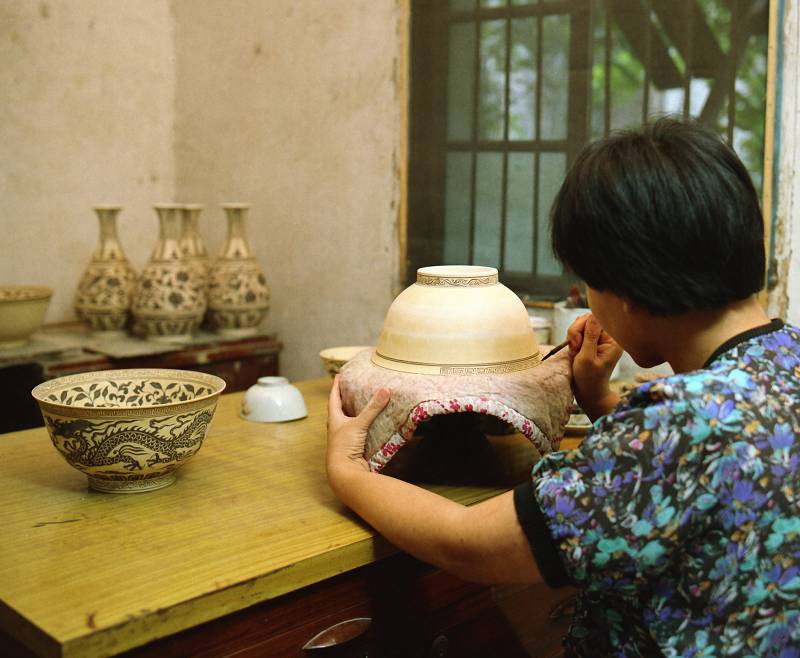
Underglaze blue decoration added to a bowl
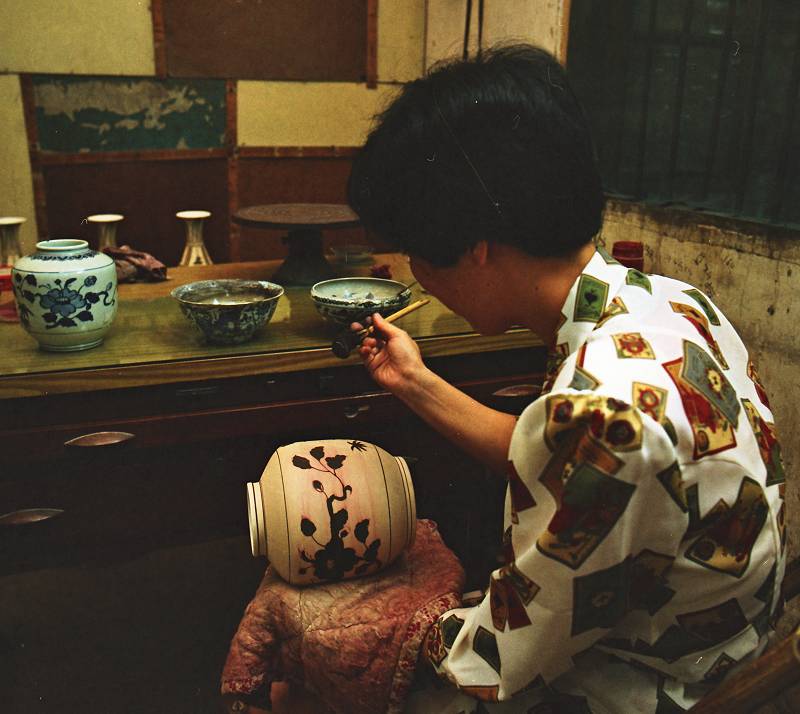
The red color on the unfired jar is tracing color that is used to create an imprint on the porcelain body that could be followed when drawing the final decoration with cobalt. As could be seen from the model on the table, the cobalt will be drawn in several most carefully calculated shades.
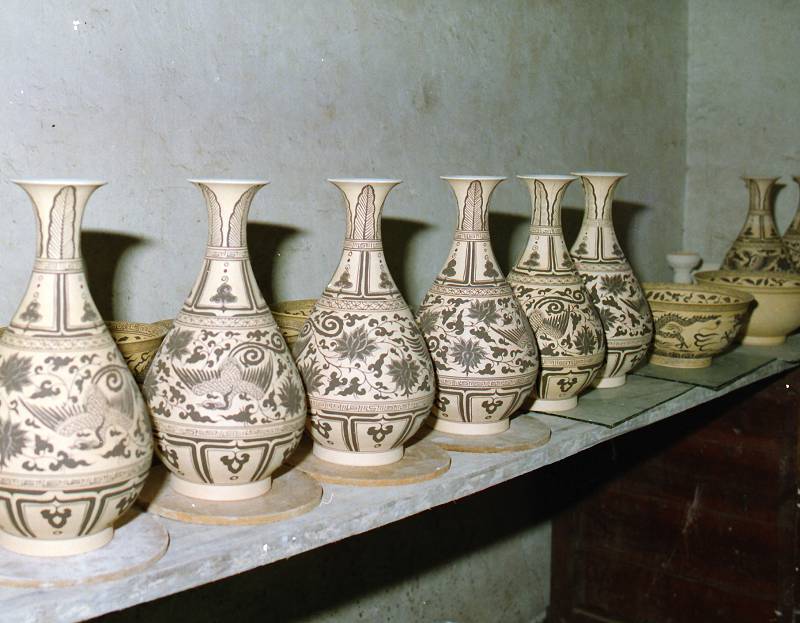
Pear shaped vases decorated with cobalt, waiting to be glazed.